Wilderness Survival Tips
Essential advice for navigating difficult and unexpected situations. With our wilderness survival tips you will learn how to stay safe, healthy, and...
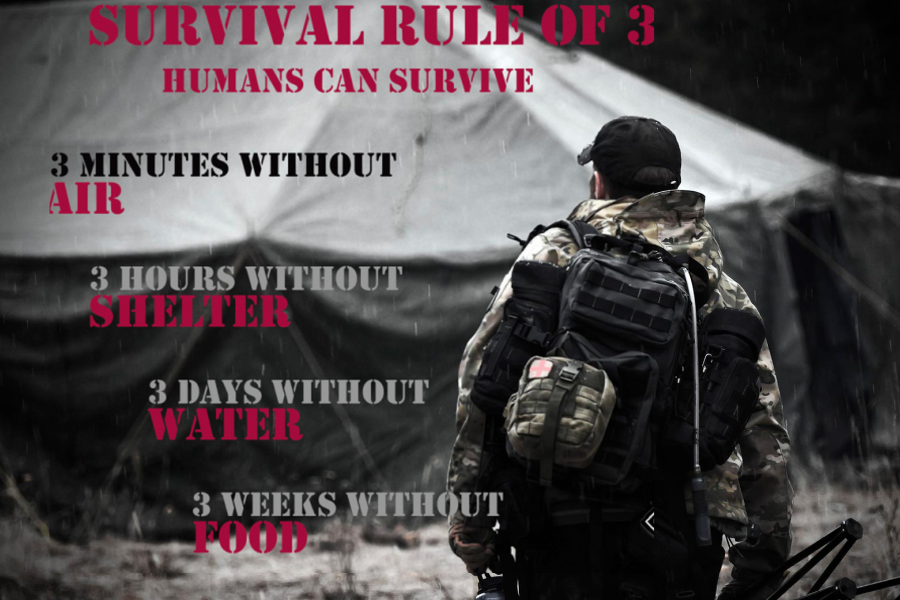
When it comes to survival, there are four basic rules that you should consider. These rules help you when preparing for an emergency and the simplicity should help you stay focused on what you need to do when the time comes to act. Absent critical injuries, following these rules will help keep you alive.
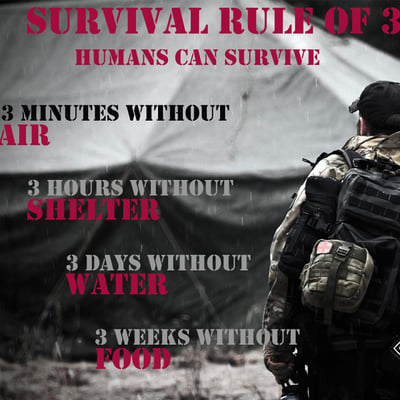 In general, the human can survive for:
In general, the human can survive for:
Without oxygen, you will die in three minutes therefore it is your obvious priority. This is the emergency situation that gives you the least amount of time to react for your survival. House fires are the most common cause of death due to asphyxiation so for everyday life you should prepare yourself for a fire. Make an escape plan, especially if you have children, and have smoke detectors and fire extinguishers installed in your home. Practice your escape route and if you want to make it a little more realistic, blindfold yourself and try to make it out of your house. It won’t be a casual stroll out during a fire so you should consider this when practicing.
If you are a serious prepper, you may consider purchasing gas masks. Most people think bio chemical warfare when they think of gas masks but they work for fires as well. I have gas masks for my family, and during the Colorado Springs Waldo Canyon Fire, it was comforting to know that if conditions got bad enough, my family and I would be able to breath.
Another killer to consider is carbon monoxide poisoning. Again, have detectors installed in your home. If you are stranded in your car, be sure you have proper ventilation and that your tailpipe is clear. If you are stuck in a snow storm, be sure to crack your windows slightly and get out of the car and clear your tailpipe of any drifting snow. Its probably a good idea too to conserve gas and only run your car when you need it. This falls under the second most important category of Exposure(shelter).
Poisonous Fumes from chemicals are another concern. Fumes such as these can kill or render you unconscious almost instantly. If you see fumes coming out of a tanker truck, barrels, or a industrial complex...beware! If you see someone laying on the ground and you see fumes, think twice before rushing in to help them, for you could end up laying on the ground next to them. Some fumes are invisible however, so you may think twice before rushing to someone’s aid even if you see nothing. Assess the situation and approach with caution. This is especially important if you are underground or in hole or large depression. I worked in the gold mines of Colorado and was constantly trained about and reminded of these invisible gases that are naturally occurring.
Oxygen Deprivation due to smothering. This can happen if you are buried alive in an avalanche, mudslide, landslide, or the like. An earthquake could cause a building to collapse or you could be buried in your home by an avalanche or by volcanic ash. Your best course of action here is avoidance. Don’t put yourself in these situations and during an earthquake, get outside if you can. Drowning is an obvious form of asphyxiation. Flash floods, tsunamis, falling into a river, falling through ice… all incidents that could occur unexpectedly. Take proper precautions when around water and know your evacuation route.
Severe blood loss is a very likely situation in an an accident or disaster. Practice your first aid skills so that you will react accordingly in this situation. Apply direct pressure to a bleeding wound and or a tourniquet when possible and seek medical help immediately. It is a good idea to be prepared for this situation and you can do so by having Blood Stop pads, QuikClot or other similar items in your first aid kit.
Shock. Shock can kill. Keep yourself or the victim warm and comfortable. Cover with a blanket or coat and loosen any restrictive clothing. Don't move around unless it is to get out of harms way and keep constant contact with the person. If the person is unconscious, cover them with a blanket, elevate their legs and frequently check for breathing.
Exposure to the elements of nature should be your next concern. Whether it be from extreme heat or extreme cold, you must know what to do to keep yourself alive. Ignore exposure and you may not be able to function in only a few short hours. Do you have shelter when away from home? If not, do you know how to build an effective shelter with the resources in your neck of the woods? Make a plan and know how to carry it out.
You might ask yourself when will I ever be faced with a situation where I will be exposed to the elements. The answer is, every day. If you drive to work or go on walks in large parks you are at risk. You may think you are safe because you are in a city but what happens if you run your car off the road during a blizzard. You may think someone will see you but you could be sorely mistaken. Do you want to take that risk? The best way to survive the elements is to have a survival kit in your possession at all times. This is more commonly called an Every Day Carry or EDC. This doesn’t have a huge backpack full of everything you will ever need. Its not a Bug Out Bag...its an EDC. Things you might put in your EDC are matches, a Mylar blanket, and a small flashlight. Put a large kit in your car since you are more likely to get stranded in your vehicle than anywhere else.
Your next concern should be where are you going to get your water from and how much energy you exert if there is a lack of water. In temperate climate and without exertion, the human body requires approximately 2.5 liters of fluids per day. In extreme heat, you will require significantly more water and should you have diarrhea, your problems are increase greatly.
Water is heavy and not easy to carry so you must learn how and where you can procure this precious resource. You should not eat if you do not have water as it will only speed up your rate of dehydration. Furthermore, you should not work or travel during the day, in extreme heat, if you do not have enough water to sustain yourself. Rest, keep from getting overheated and travel at night. Never ration water, drink what you need! Here are some basic tips about Water that you may not have considered.
The least critical of the 4 Rules is what most people prep for. Food is a big concern but not the most dire as it takes a fair amount of time to starve to death and food is probably the easiest resource to come by... you just have to be willing to eat some things that you normally wouldn’t. You might not like it, but insects might replace your steak and eggs in the morning.
I have a hard time with this rule however, because I am of a slender build and have very little fat to burn. I know that if I don’t eat while exerting energy, I crash fast. In an emergency, I guarantee you that I will be eating everything I can get my hands on. The good thing is that I don’t have to eat much to keep me going...and I know how to hunt and trap food. Do you?
In the end, what it boils down to is that you need to know what is happening and know what you need to do to survive. Access your situation... If you can’t breath, get some place that you can. If you are bleeding, dress your wounds. Do you have adequate shelter and/or the means to start a fire to keep warm? What water sources do you have nearby? All those covered? Sweet! Let’s eat.
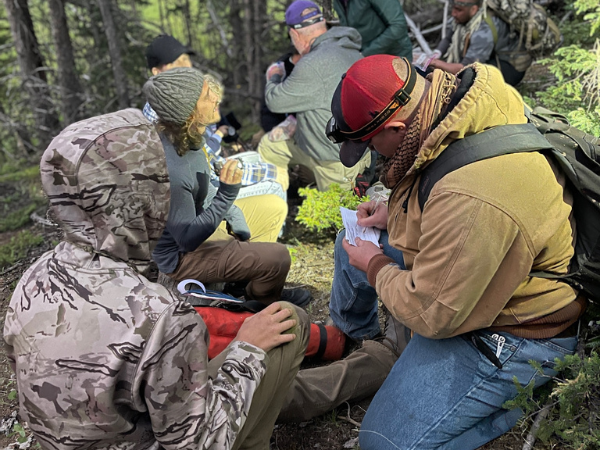
Essential advice for navigating difficult and unexpected situations. With our wilderness survival tips you will learn how to stay safe, healthy, and...
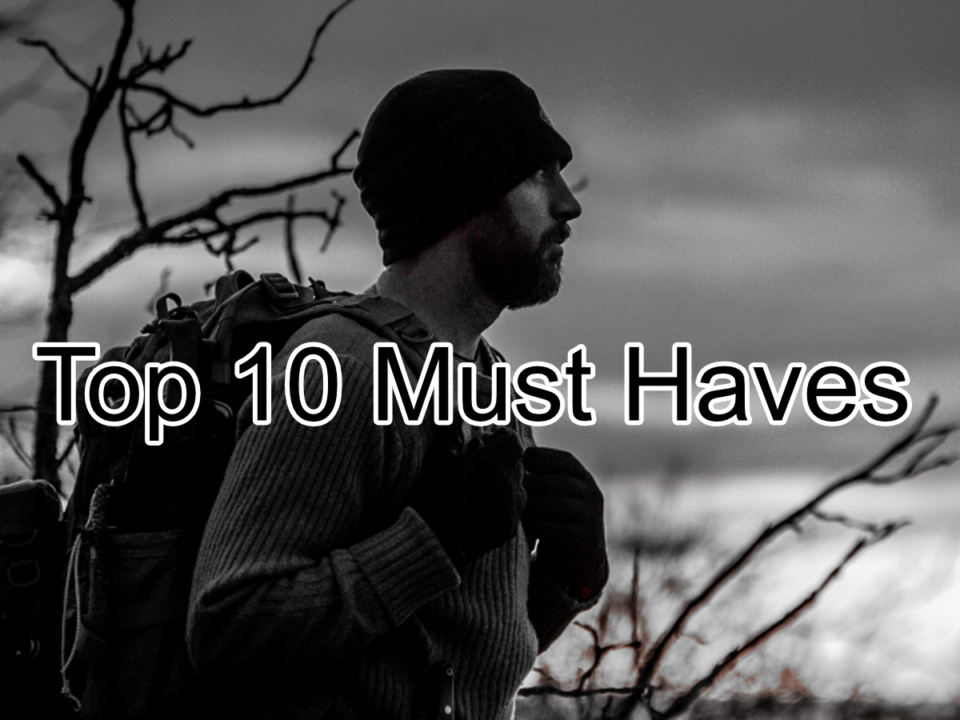
Humans are no longer built to survive in the wilderness with nothing. Our most powerful tool is our brain, and with the use of it we discovered tools...
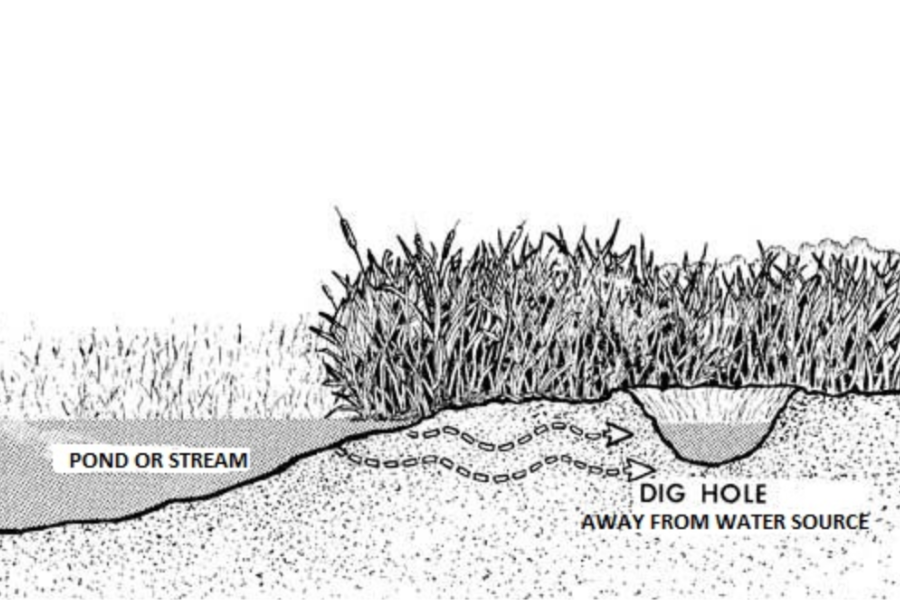
3 min read
What is a Seep Well? Essentially a seep well is a hole dug in the ground, near a water source that goes below the natural water table. The water...